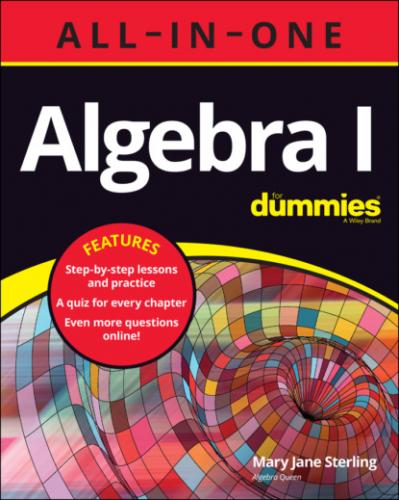In all the cases using fractions, the denominator tells you how many equal portions or pieces there are. Without the equal rule, you could get different pieces in various sizes. For example, in a recipe calling for
Along with terminology like numerator and denominator, fractions fall into one of three types — proper, improper, or mixed — which I cover in the following sections.
Converting Improper Fractions and Mixed Numbers
An improper fraction is one where the numerator (the number on the top of the fraction) has a value greater than or equal to the denominator (the number on the bottom of the fraction) — so the fraction is top heavy. Improper fractions can be written as mixed numbers or whole numbers, and vice versa. A mixed number contains both a whole number and a fraction.
To convert a mixed number to an improper fraction: Multiply the integer (A) times the denominator (D) and add the numerator (N). Put that result over the denominator (D).
To convert an improper fraction to a mixed number: Divide the numerator (N) by the denominator (D). Put the quotient (Q) in front as the integer, the remainder (R) as the numerator, and the denominator (D) in its usual place.
You sometimes want an improper fraction, and other times a mixed number; it just depends on what you’re doing at the time. You can easily change from one form to the other.
A. Maria has a whole pizza plus seven pieces more:
Q. A recipe calls for
A.
1
2 Change the mixed number
3 Change the mixed number
4 Change the mixed number
5 Change the improper fraction
6 Change the improper fraction
Finding Fraction Equivalences
In algebra, all sorts of computations and manipulations use fractions. In many problems, you have to change the fractions so that they have the same denominator or so that their form is compatible with what you need to solve the problem. Two fractions are equivalent if they have the same value, such as
Rewriting fractions
When you multiply or divide the numerator and denominator of a fraction by the same number, you don’t change the value of the fraction. In fact, you’re basically multiplying or dividing by 1 because any time the numerator and denominator of a fraction are the same number, it equals 1.
For example, how much of a 32-ounce package are you using if your recipe calls for 12 ounces? You’re using
Here’s another example: Create two new versions of the fraction
To come up with smaller numbers, you need to find something that divides both the 16 and the 20 evenly. There are two possibilities: 2 and 4.
The fraction
There is no end to the possibilities when creating multiples of a particular fraction:
However, not all fractions with large numbers can be changed to smaller numbers.
